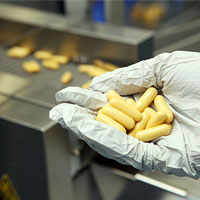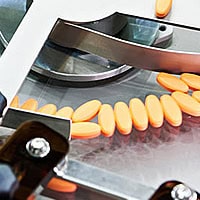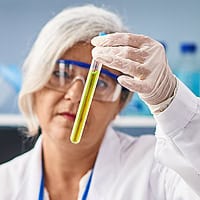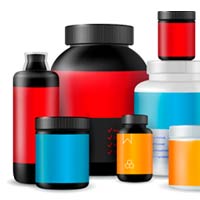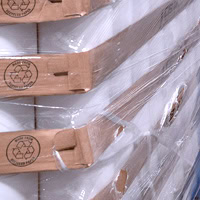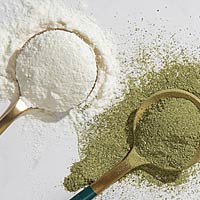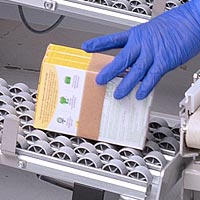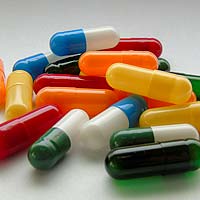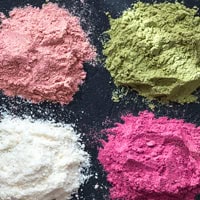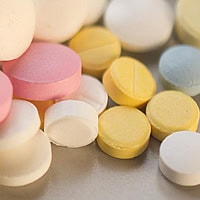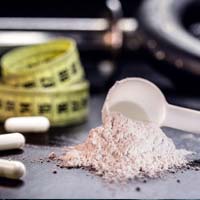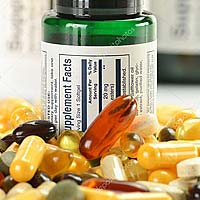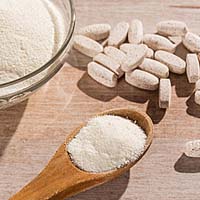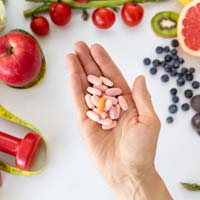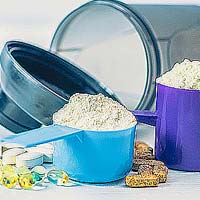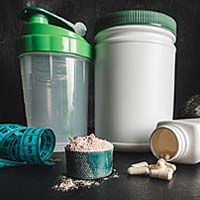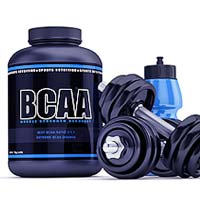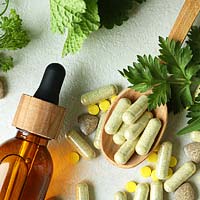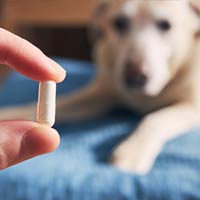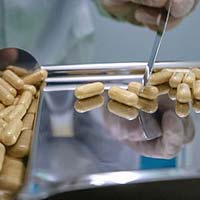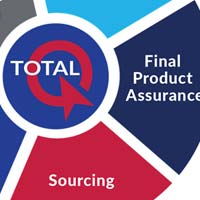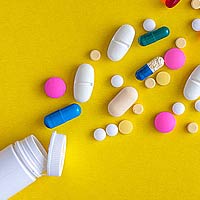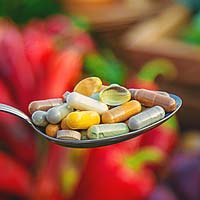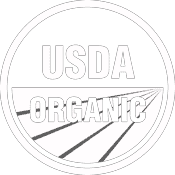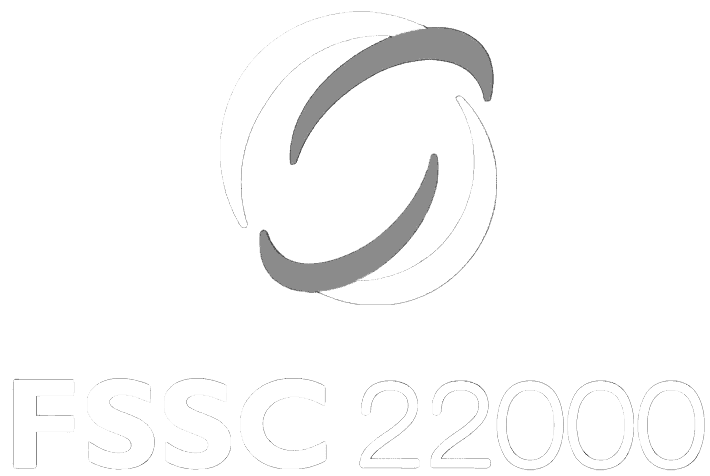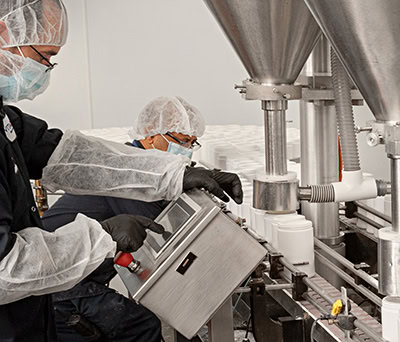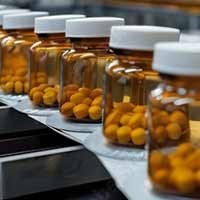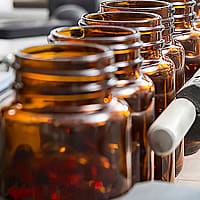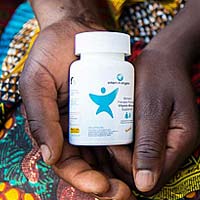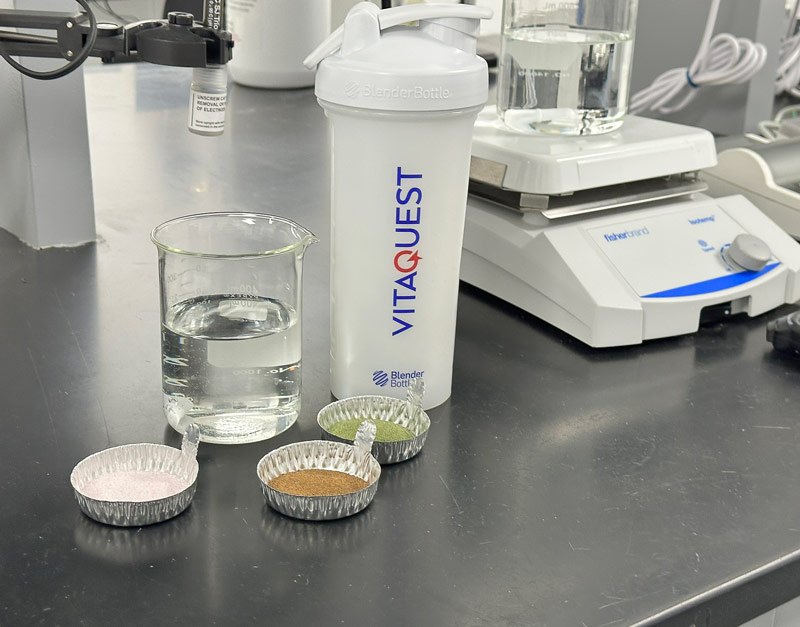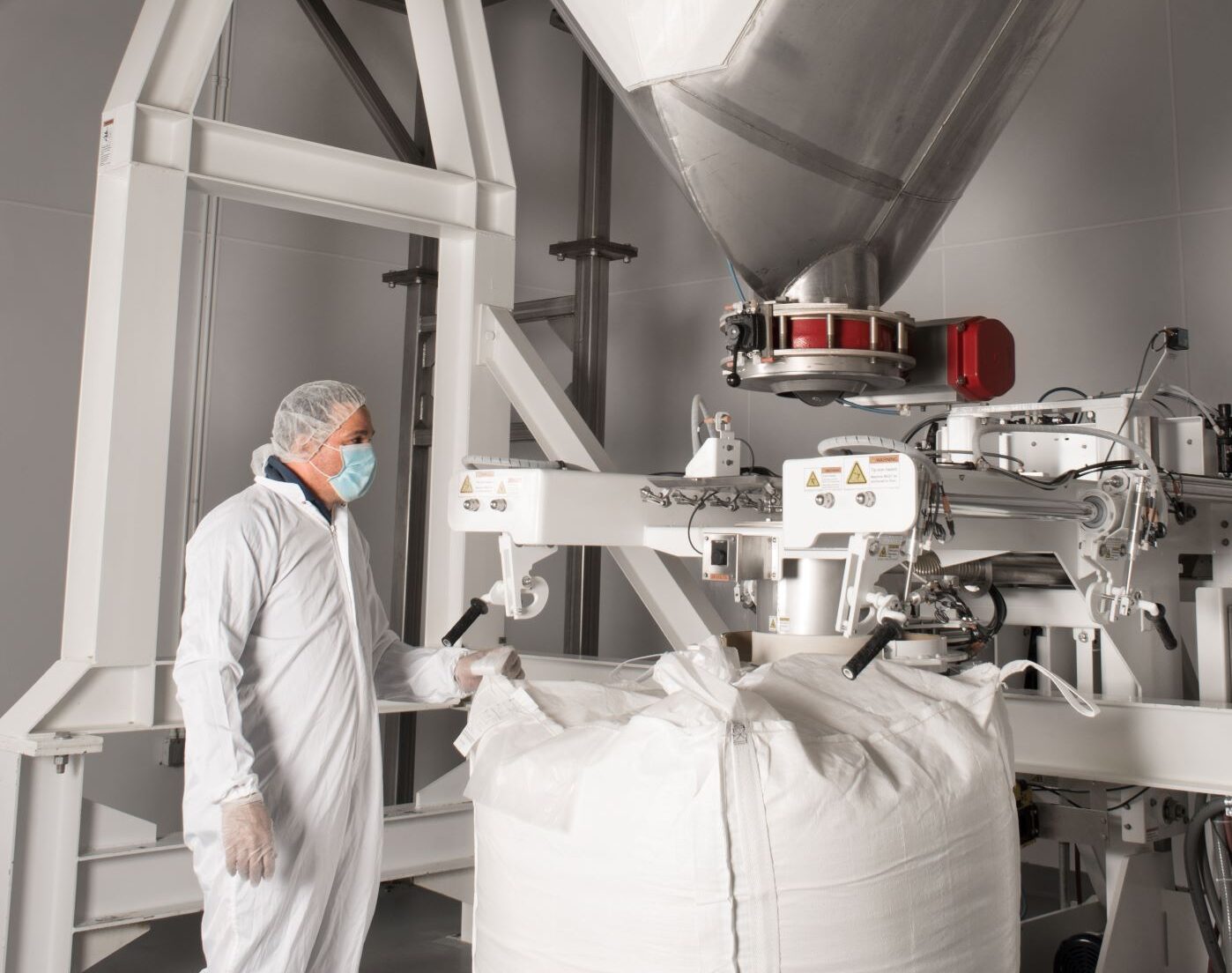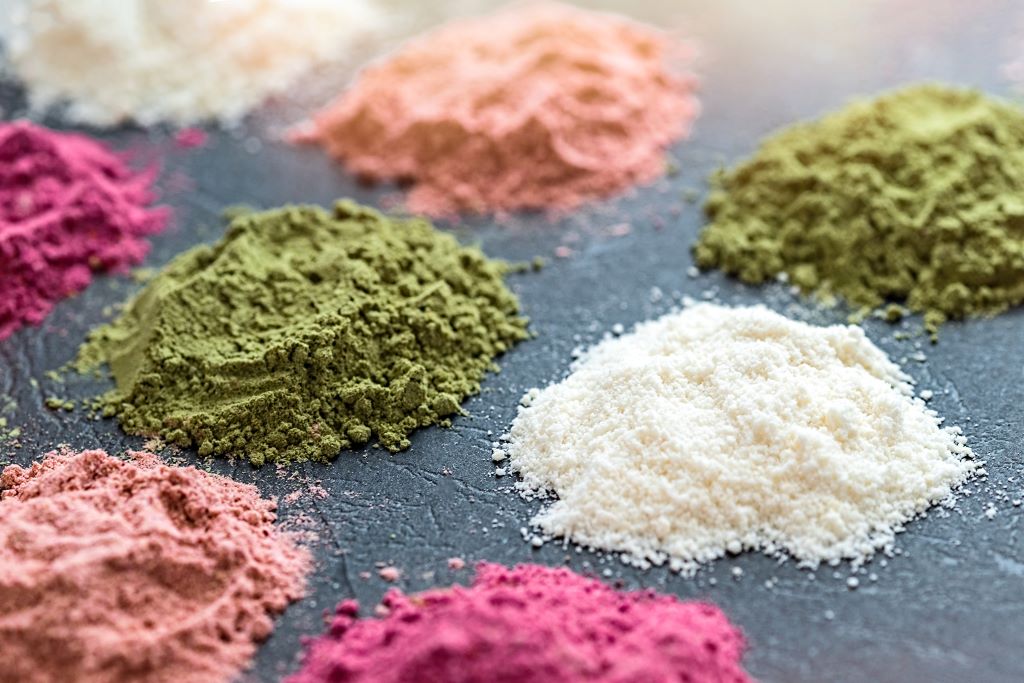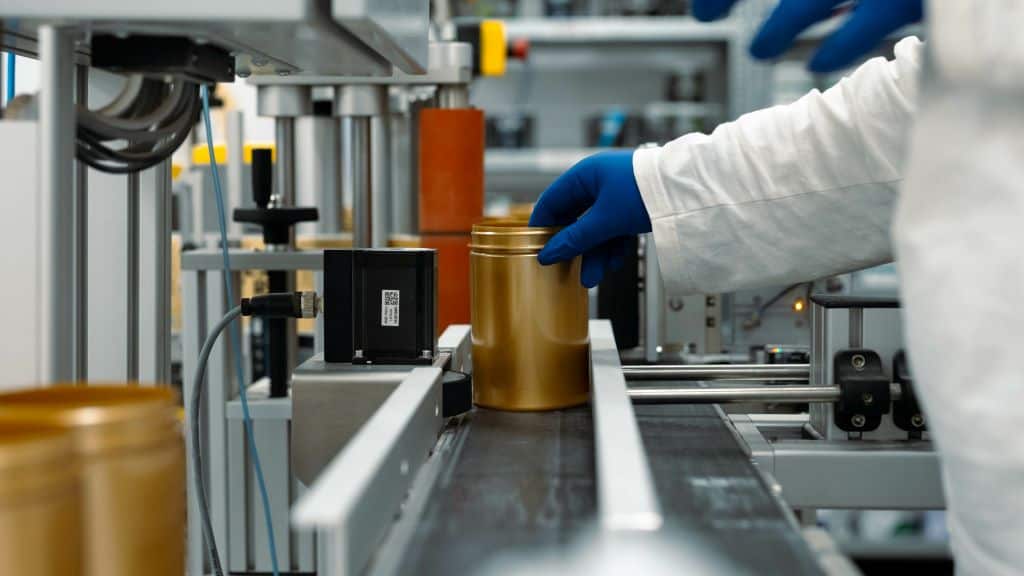Are you new to dietary supplement manufacturing (a.k.a., nutritional supplement manufacturing)? Perhaps you already have experience in having dietary supplements manufactured for you, but you want to understand the process better to minimize surprises and better plan your production schedule. In either case, you’ll want to read this blog article, which provides a step-by-step guide to manufacturing dietary supplements.
What Are Dietary Supplements?
Although the answer to the question “What’s a dietary supplement?” may seem obvious, some people make rookie mistakes because they don’t know the correct answer (more on this under ‘Exploring “New Dietary Ingredients” in Dietary Supplements’ below).
According to the Dietary Supplement Health and Education Act of 1994, a dietary supplement consists of “dietary ingredients,” which include vitamins, minerals, herbs, amino acids, enzymes, or other substances.
According to the FDA, “Dietary supplements are intended to add to or supplement the diet and are different from conventional food. Generally, to the extent a product is intended to treat, diagnose, cure, or prevent diseases, it is a drug, even if it is labeled as a dietary supplement.”
Essentially, this means that dietary supplements are meant to help maintain or support the good health of people who are already healthy. No claims can be made that they will help reduce symptoms of medical conditions or otherwise treat a medical condition/disease.
Common delivery forms for dietary supplements may include capsules, tablets, powders, liquids, etc.
Exploring “New Dietary Ingredients” in Supplements
To be lawfully included as dietary ingredients, they must fall into one of three categories:
- They must be an NDI or New Dietary Ingredient (i.e., having been submitted to the FDA and satisfactorily demonstrated safety).
- They must be an ODI or Old Dietary Ingredient (i.e., demonstrated to have been in commerce before October of 1994).
- The ingredient has GRAS or Generally Regarded as Safe status (i.e., directly through the FDA or as part of a self-affirmed GRAS process).
A new and exciting ingredient that doesn’t fall into one of these categories is not lawful to include in a dietary supplement—although some brands violate this regulation.
The Process of Manufacturing Dietary Supplements
The process of manufacturing dietary supplements requires several factors. This includes specialized equipment (e.g., blenders, particle modifiers, capsule fillers, tablet presses, packaging line, etc.), development of the formula, the selection of raw materials, pricing considerations, purchase order submission, ordering and testing raw materials, bench work, a pilot batch, a production batch, testing of the finished product, and certifications and compliance.
Let’s explore each of these steps in more detail.
Step 1: Equipment for Manufacturing
The types of equipment needed for dietary supplement manufacturing include the following:
- Scale – Carefully calibrated scales and balances are used by pharmacy technicians to weigh out the raw material ingredients (both active nutraceuticals and inactive excipients) that will be used in the dietary supplements. Accurate weights are necessary to ensure the finished product contains the correct amount of each ingredient per serving.
- Particle Modifiers – It is important for dietary supplements to deliver consistent weight and composition from dose to dose. Particle modification helps to ensure uniformity in size, density, and flowability. Particle modification can involve using specialized equipment including roller compactors, fluid bed agglomerators/granulators, oscillators, knife/hammer mills, and slugging presses.
- Commercial Blender – Different kinds of equipment like V-blenders and ribbon blenders are used to mix the raw materials that have been measured beforehand. The right amount of time in the right blender ensures that the mixture is consistent throughout, which is important for ensuring the final product has the right amount of each ingredient in every serving.
- Capsule Filler – Once the powdered blend has been uniformly mixed, it can be placed into the hopper of an encapsulation machine, which fills individual capsules with the correct amount of powder. If the product is destined to be a tablet instead, then…
- Tablet Press – The powdered blend can be placed into the hopper of a tablet press which will punch out individual tablets with the correct amount of powder, compressed to an easy-to-swallow shape and size.
- Packaging Line – After the capsules or tablets are made, they are transferred to the packaging line, which fills the bottles, applies the labels, and attaches safety seals and caps. The bottles are placed into case boxes and the identifying outer label is applied and sealed for shipment.
Step 2: Developing the Formula
If you want to put your product on track to achieve long-term success, then you want it to work well for the purpose intended so that your customers will continue to purchase it. That means that you need a well-thought-out, science-based formula in the first instance.
Have you already confirmed your dietary supplement formula uses the correct doses of the right raw material ingredients to provide an evidence-based product that will have efficacy and allow you to substantiate structure/function claims? Have you confirmed your formulation isn’t just a, “me too” product, but rather contains some novel or otherwise interesting, science-based ingredients that help it stand out from the competition? If not, a quality contract supplement manufacturer may be able to help.
Step 3: Selecting Raw Materials
To maintain the theme of creating a well-thought-out, science-based formula, you must utilize high-quality, evidence-based ingredients. Ideally, those ingredients should be able to be used by the body and play well together.
Although you may want all your ingredients sourced from the United States, it is not necessarily the best thing for your science-based formulation. For example, you want your Ashwagandha to come from India, not Iowa. The fact is high-quality ingredients may be sourced worldwide from qualified vendors. A good supplement contract manufacturing partner can help source top-quality raw materials from a global network of approved suppliers.
Step 4: Pricing Considerations
If you haven’t already done so, it is important to complete a competitive analysis of similar dietary supplements on the market and determine the range that you need your cost of goods to be.
This information is vital when formulating the product. For example, you may want your cost of goods to be no more than $7 but have formulated a product that will cost $11. Again, an experienced contract manufacturer can help you with your formulation so that you can stay within your cost of goods goals.
When you submit a request for pricing with a contract supplement manufacturer, they will create a prototype version of the formulation and verify raw material pricing for key ingredients with various vendors. At this point, you will receive an initial price quote—which should be inclusive of labor, equipment, packaging, and freight costs. This pricing process may take about 5-10 days.
Step 5: Purchase Order Submission
Once you submit a purchase order for your supplement, the real countdown starts. A purchase order demonstrates your commitment to the project and allows the contract manufacturer to seriously start the manufacturing process, beginning with the ordering of raw materials.
Step 6: Ordering Raw Materials
Without question, ordering and receiving raw materials is the longest part of the manufacturing process, and can take 2-8 weeks. The reason for this has to do with location and immediacy of availability (or lack thereof).
If the raw material is stocked in a domestic warehouse, it may be received within 2 weeks. However, if the raw material is stocked overseas, it will certainly take longer for shipping.
Furthermore, some raw materials are made to order. Some probiotics are a good example of this. As live microorganisms, probiotic ingredients must be grown on a strain-specific fermentation medium, and that may take 6 weeks or so. Now, if those probiotics come from Europe or Asia (as is often the case), add 1-2 weeks shipping time, for a total of 8 weeks from placing the order to receiving it.
Step 7: Testing Raw Materials
Although raw material suppliers should and will provide a certificate of analysis (COA), the contract manufacturer should not rely on the COA (trust but verify).
That means that once the raw materials arrive at the contract manufacturer’s facility, they must be quarantined and tested before they are released into inventory. The type of testing required includes identity and potency, microbiological compliance, and heavy metal compliance. The entire process of raw material testing may take anywhere from 1-2 weeks.
Identity and Potency:
To test for identity and potency, there must be an established methodology for testing the raw material ingredient. That methodology may exist in the U.S. Pharmacopeia or provided by some other credible source. Not only must that methodology be followed, but testing reagents and equipment must be purchased if the contract supplement manufacturer doesn’t already have them. Even more importantly, laboratory reference standards must also be on hand. If you didn’t already know, a reference standard is a validated sample of the raw material ingredient that the CM’s laboratory will use for comparison purposes. The raw material will be tested against the standard using appropriate laboratory equipment to see if it matches. Appropriate lab equipment may include Fourier Transform Infrared (FT-IR) Spectroscopy, Ultraviolet-visible (UV-VIS) Spectroscopy, Inductively Coupled Plasma – Mass Spectrometry (ICP-MS), and High-Performance Liquid Chromatography (HPLC). Identity and potency can be established following this process.
Microbiological Testing:
Next, the raw material must be tested for microbiological compliance to verify that it does not contain dangerous levels of microorganisms such as yeast or mold. Raw materials must also confirm the absence of pathogens such as Salmonella and E. coli.
Special equipment in a separate microbiological laboratory will be required for this purpose. Since all contract manufacturers do not always have an in-house microbiological lab, this may mean that the raw material will have to be sent to a third-party lab for micro-testing. Some contract manufacturers do not even have a standard analytical lab, so all testing must be conducted by a third-party lab.
You must factor in additional time (maybe 2 to 4 weeks) when raw materials are sent out to a third-party lab for testing.
Heavy Metal Testing:
Finally, heavy metal testing for lead, mercury, cadmium, and arsenic must also be conducted to verify compliance with strict USP/FDA requirements. For those marketers who want to offer their products in California, they must also consider California Proposition 65, which has even more stringent requirements that are associated with some hefty fines if a product is found to be out of compliance.
Step 8: Bench Work at the Manufacturing Facility
Benchwork (a.k.a., an R&D batch) is the next step in the manufacturing process. This is where the raw materials will all be mixed, and a limited number of tablets, capsules, or powders will be produced in the lab to ascertain that the formulation will work in a finished dosage form.
Depending upon the situation, the contract manufacturer may provide samples of the tablets/capsules/powder to the customer to evaluate. Once the customer approves the samples, the contract manufacturer can move on to the pilot batch. Benchwork may take 1-7 days depending upon adjustments that may need to be made to the formula.
Step 9: Creating a Pilot Batch
Based on the results of the bench work, the supplement manufacturer will next run a pilot batch of the product on the actual production equipment. This is necessary to determine if the product will run correctly on the equipment during the actual production run. If there are any issues, the formulation may need to be adjusted, which may require approval by the brand owner. If everything goes well, the contract manufacturer will move on to the full production run. The pilot batch may also take from 1-7 days depending upon adjustments that may need to be made to the formula.
Step 10: Production Run and Testing
The production run is when the finished product will be produced. Depending on the dosage form, blenders, capsule fillers, tablet presses, etc., are used.
The production run typically takes place over hours or a couple of days. There are several steps in the process, including some additional testing that needs to be done. This includes uniformity of mix, particle size analysis, content uniformity, flowability, and disintegration testing.
Achieving Uniformity of Mix:
All the raw materials that comprise a given dietary supplement are mixed in a large-scale commercial blender.
During this process, the raw materials must be completely and uniformly mixed to ensure an even distribution of each specified vitamin, mineral, herb, etc., throughout the entire batch. A uniform mix is important since we want all the capsules, tablets, or powders made from a batch of raw materials to consistently have the proper, predetermined amount of nutrients in them. A sample of the mixed blend is taken to the lab, and the levels of certain ingredients are tested to verify that the mix is indeed uniform.
Weight Uniformity (Spot Testing Tablet Weight):
After determining that the mix is uniform, the next step is to ensure that each tablet and capsule has the correct weight to verify its nutrient potency. This is known as “weight uniformity.”
While capsules are being filled or tablets are being punched during the manufacturing process, their weight is regularly spot-tested. In addition, to capturing weight uniformity data, additional data regarding thickness and hardness is also recorded.
For both capsules and tablets, weight uniformity is charted to ensure results within the specified range. If for any reason, there is an unacceptable variation from the product specifications for physical parameters (i.e., weight, thickness, density), those capsules or tablets are rejected.
Disintegration Testing:
Disintegration testing is a process whereby the capsule or tablet is put into temperature-controlled water or a buffer solution and is then agitated (moved around in a small container) to simulate the muscular action of digestion. If the tablets/capsules disintegrate within the specified time in the water, it is reasonable to believe they will likewise disintegrate in the human digestive tract, and their component nutrients will be available for absorption.
Step 11: Testing of Finished Products
As with raw material testing, identity and potency, microbiological compliance, and heavy metal compliance testing (as previously described) are also conducted for finished products. This will culminate in the contract manufacturer producing a COA which will be sent to you.
Once approved, the finished product can be shipped to your distribution facility, and the manufacturing process is complete—although in some cases, post-manufacturing finished products may undergo stability testing. Not many contract manufacturers can offer in-house stability testing, and it can get costly when performed by third-party labs, so it is worthwhile to select a CM with in-house testing capabilities and capacity.
Stability Testing:
If expiration dates appear on the label of a product, then stability testing must be conducted as scientific justification to support the shelf dating. Stability testing helps identify which nutrients are most vulnerable to damage and to what degree potency is affected.
By accounting for such variables as specific ingredients, dosage form, packaging, and storage conditions, stability testing can determine how much of an increase in the potency for a given nutrient is needed to compensate for potency losses over time.
There are two types of stability testing:
- Accelerated stability involves the use of a controlled environmental chamber at 40°C temperature and 75% relative humidity, wherein three months in the chamber may be the approximate equivalent of 24 months of aging time.
- Ambient stability is a real-time process where the supplement is held in a retain room at 25°C and 60% relative humidity and is removed periodically for testing over 24 months.
Step 12: Certifications and Compliance
Although it is not officially a “step”, certifications and compliance are still important for the manufacturing dietary supplements.
Various retailers and e-tailers (e.g., Amazon) require that dietary supplements they sell must be manufactured in a GMP-certified facility. This type of certification provides consumers and retailers with an assurance that your product is manufactured utilizing industry best practices.
Among third-party GMP certifications, USP is the best known. Others include NSF GMP certification. Likewise, NSF Certified for Sport is an additional level of assurance to athletes, coaches, dieticians, and consumers regarding the safety of the supplements.
A significant number of consumers desire Kosher and Halal-certified products, so this is another important consideration. In some cases, brand owners wish to offer certified organic products, which requires that the contract manufacturer has this authorization as well.
At the very least, you want to ensure your contract manufacturer is USP and NSF GMP certified. Additional certifications of the types mentioned are certainly a plus and can help give you a competitive advantage.
Dietary Supplements Manufacturing and FDA Regulations
It has been erroneously stated that the dietary supplement industry is unregulated. Nothing could be further from the truth. The fact is that the FDA has oversight responsibility for the safety of dietary supplements and the FTC has oversight responsibility for the truthful advertising of dietary supplements. Furthermore, there are specific regulations addressing several areas related to dietary supplements, as discussed below.
FDA’s Oversight Responsibility for Dietary Supplements
The Dietary Supplement Health and Education Act (DSHEA) amended the Federal Food, Drug, and Cosmetic Act (FD&C Act) to create a new regulatory framework for dietary supplements. Under DSHEA, FDA does not have the authority to approve dietary supplements before they are marketed. Instead, the FDA is responsible for enforcing the laws and regulations governing dietary supplements. To identify violations, the agency conducts inspections, monitors the marketplace, examines dietary supplements and dietary ingredients offered for import, and reviews NDI notifications and other regulatory submissions for dietary supplements. FDA also investigates adverse event reports and complaints from consumers, healthcare professionals, and other regulatory agencies.
Regulation of Advertisements for Dietary Supplements
The Federal Trade Commission (FTC) regulates advertising, including infomercials, for dietary supplements. FDA and FTC share responsibility for the oversight of dietary supplements and related promotion, with the FDA generally responsible for safety, quality, and labeling and the FTC generally responsible for advertising.
The FDA and FTC have the authority to take enforcement actions against dietary supplements and firms if they identify violations. This could result in 6-figure fines. In addition, the FDA considers advertising when evaluating the intended use of a product labeled as a dietary supplement.
For more information on the FTC’s role in regulating dietary supplement advertising, please visit the FTC website. Advertising and other promotional material sent through the mail are also subject to regulation by the U.S. Postal Inspection Service.
Is it legal to market a dietary supplement product to treat, prevent, or cure a specific disease?
As stated previously, no claims can be made that they will help reduce symptoms of medical conditions, or otherwise treat, prevent, or cure a disease or medical condition. Doing so would classify the product as an unapproved drug.
What kinds of claims can be made on dietary supplement labels?
The three health claims that can be made on dietary supplement labels are health claims, structure/function claims, and nutrient content claims.
- Health claims – These are specifically worded, FDA-authorized claims about the relationship between a dietary ingredient or other food substance and reduced risk of a disease or health-related condition. This includes claims about calcium, vitamin D and osteoporosis, folate and neural tube defects, and others.
- Structure/function claims – These are the following types of structure/function claims:
- A statement that claims a benefit related to a classical nutrient deficiency disease and that discloses the prevalence of such disease in the U.S.;
- A statement that describes the role of a nutrient or dietary ingredient intended to affect the structure or function in humans, or characterizes the documented mechanism by which a nutrient or dietary ingredient acts to maintain such structure or function; or
- A statement that describes the general well-being of the consumption of a nutrient or dietary ingredient.
- May include natural life processes (e.g., menopause).
- Nutrient content claims – These are claims that expressly or by implication characterize the level of a nutrient in a dietary supplement. Examples include, “High source of” and, “Good source of.”
Understanding Good Manufacturing Practices for Dietary Supplements
The FDA’s final regulation on good manufacturing practices (GMPs) for dietary supplements established stringent requirements for companies involved in the manufacturing, packaging, labeling, and holding of dietary supplements.
Under the rule, manufacturers must evaluate the identity, purity, quality, strength, and composition of their dietary ingredients and dietary supplements. GMPs are crucial to the supplement industry’s ability to deliver safe, accurately labeled products to the consumer and to achieve the public health benefits noted by Congress in the preamble to the Dietary Supplement Health and Education Act of 1994.
To reiterate a point made earlier in this article, it is important to utilize a contract manufacturer with NSF GMP certification. This ensures the quality, safety, and consistency of dietary supplements, including facility design, equipment calibration, personnel training, quality control, documentation, and product testing.
Profitability of Supplement Manufacturing
The global dietary supplements market size was estimated at $164.0 billion in 2022 and is projected to grow at a compound annual growth rate (CAGR) of 9.0% from 2023 to 2030, reaching $327.4 billion in 2030. For those wishing to enter this market, there is significant potential. However, recent trends indicate the public is demanding evidence of effectiveness. That means that products must be evidence-based with scientific research to support claims.
The Future of Manufacturing Dietary Supplements
The future of manufacturing dietary supplements is essentially a prediction—which is always risky. Nevertheless, there are some trends which suggest the direction the market is going:
- Collagen supplement trends – According to NBJ Collagen Report 2022, growth is strong at 14.6%.
- Vitamin and mineral trends – The estimated vitamin and supplement market has a CAGR of about 6.0%.
- Immune health trends – According to Growth Plus Reports, “the global immune health supplement market will reach $130.4 billion by 2030.”
- Sports nutrition and bodybuilding trends – According to Research Dive, the market size reached a revenue of about $17.5 billion and is predicted to grow at a CAGR of 12.9% by 2026.
- Brain health trends – According to Straits Research, the brain health supplements market is projected to reach $15.59 Billion by 2030, growing at a CAGR of 8.31%.
- Sleep supplement trends – According to Natural Products Industry Health Monitor, the value of the sleep supplements market is over $1.2 billion and is projected to exceed $1.4 billion by 2025.
- Stress supplement trends – According to Market Research Report, the stress supplements market is projected to reach a value of $756.6 million by 2028, growing at a CAGR of 6.75%.
- Pea protein trends – According to Vantage Marketing research, the organic pea protein market stood at $18.40 billion in 2021 and is expected to grow at a CAGR of 11.8% and reach $40.17 billion by 2028.
- Other trends of interest – Other marketing trends of interest include sustainability, eco-friendly practices, and clean labeling in the manufacturing process.
How Can Vitaquest Help You Manufacture Customized Dietary Supplements?
As outlined in this article, the dietary supplement manufacturing process is rigorous and requires numerous steps to create a high-quality product. Likewise, the regulation of manufacturing and marketing dietary supplements is also involved.
Vitaquest, a trusted contract manufacturer with over 45 years of experience thoroughly understands these processes and can guide you through every step of the dietary supplement manufacturing process covered in this article. We create and produce over 4,000 custom formulas for more than 500 brands and have an impressive track record of manufacturing custom powders, capsules, and tablets.
For more information on how we can help you Deliver What’s Next, call 800-526-9095 to speak with one of our knowledgeable sales executives or request a manufacturing price quote if you already have your requirements.
Frequently Asked Questions
Q: Is GMP required for dietary supplements?
Yes, per DSHEA regulations, all contract manufacturers and brand owners are required to follow GMPs. The best scenario is when contract manufacturers are GMP-certified by a reliable third party, such as USP or NSF.
Q: What is the difference between FDA and GMP?
The FDA has oversight of the regulations associated with GMP.
Q: What is the difference between GMP and cGMP?
GMP means Good Manufacturing Practices. cGMP means current Good Manufacturing Practices. They are the same.
Q: Are supplements made in a lab?
Supplements are made in a manufacturing facility. That facility may have an in-house laboratory used to test the products for purity and potency. If they don’t have an in-house laboratory, the products must be sent to a third-party laboratory for testing.
Q: What is the purpose of supplements?
The legal purpose of dietary supplements (as defined by DSHEA) is to supplement the diet with dietary ingredients (e.g., vitamins, minerals, amino acids, herbs, etc.) to help maintain the health of people who are already healthy.
Q: What is the most common dietary supplement used?
Multivitamins are the most common dietary supplements used.

